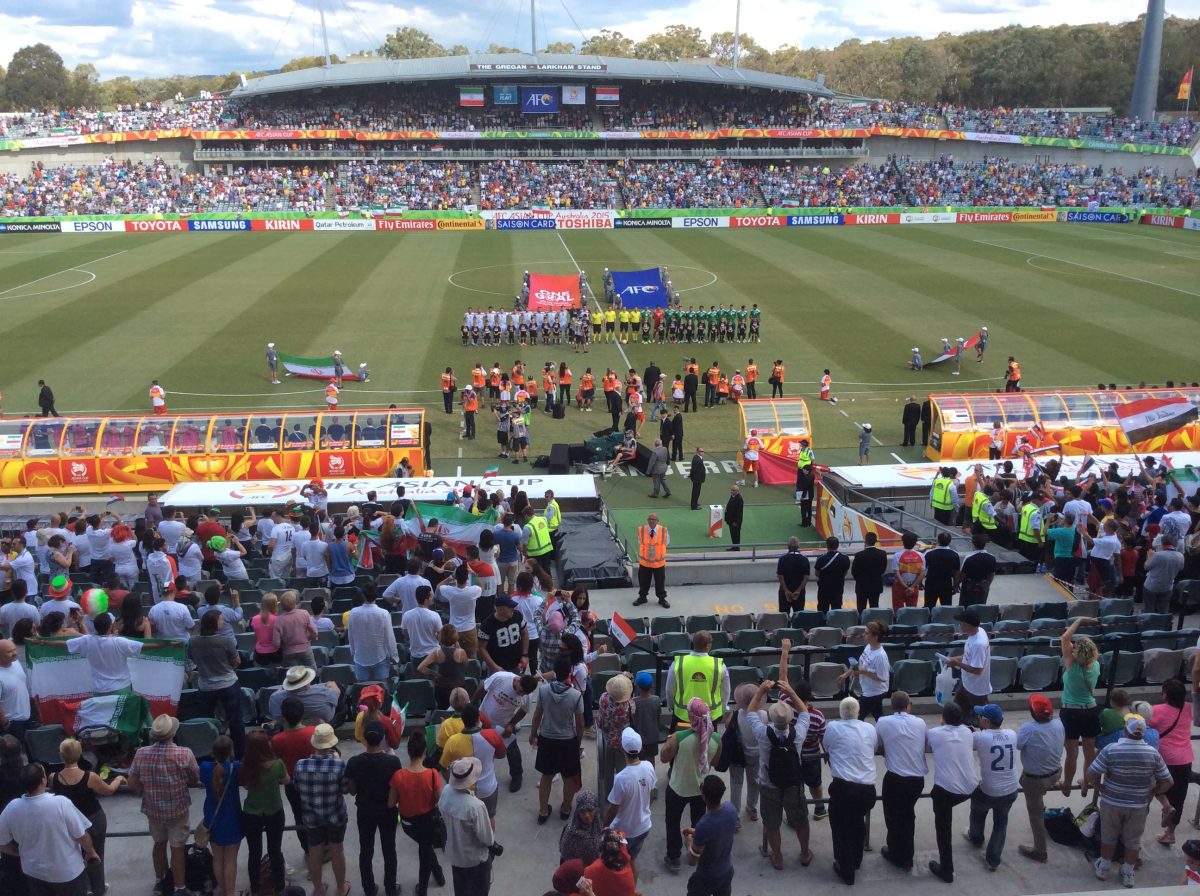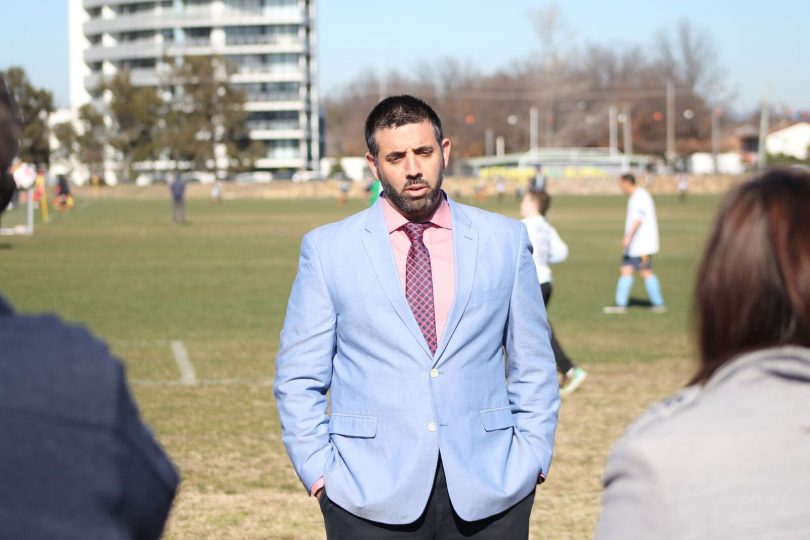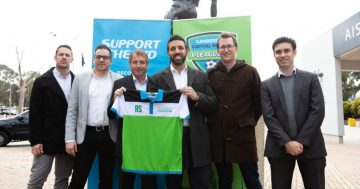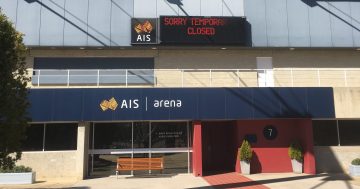
Canberra has a proven record in attracting crowds to football games, as shown by the Asian Cup 2015 at Canberra Stadium. Photo: Tim Gavel.
Canberra’s hopes of securing an A-League Men’s team have, at times, been on life support with the ACT left at the altar more than once (to mix metaphors).
Several attempts were thwarted in the past: the A-League4Canberra bid, followed by the Canberra and Capital Region A-League Bid, and now the Capital Region Football Collective.
The sad demise of the Canberra Cosmos in 2001 still stings for many.
But thanks to the perseverance of people like Michael Caggiano, it appears that Canberra is closer than ever to securing a team in the Men’s A-League.

Michael Caggiano has kept the flag flying for an A-League team in the capital. Photo: File.
The Capital Region Football Collective, of which Caggiano is a director, confirmed that just before Christmas, the Australian Professional Leagues (APL) had made an approach to open negotiations on the potential addition of Canberra to the A-League Men’s competition.
Despite this positive news, the heartbreaks of the past can’t be forgotten. It’s as if Canberra has been on trial a couple of times to test our resilience.
Who can forget back in 2009 when we were told that attendance numbers for the Asian Cup qualifier between the Socceroos and Kuwait would provide a gauge of the city’s support for an A-League team? And Canberra responded in numbers!
The Socceroos fielded a team minus all of their overseas stars. Despite that, 20,032 fans turned out at Canberra Stadium to watch the 1-nil loss to Kuwait.
Canberra had been bidding for a licence for the 2010-2011 season, but a poor turnout for an A-League game in the city in September 2009 was seen as a major setback.
In the end, the licence went to the Western Sydney Wanderers.
There have been other false dawns, but it would appear Canberra is prominent in the eyes of those seeking to expand the A-League Men’s program in 2024.
Another factor, which can’t be underestimated, is the success and stability of the Canberra United program in the Women’s A-League.
What will be interesting is the commitment from the ACT Government with the recent GWS deal still very fresh.
And let’s not forget the initial caveat associated with building a new stadium – the proviso that Canberra has an A-League Men’s team to ensure year-round use of the ground.
Regardless of historical setbacks, there should be an A-League Men’s team in the nation’s capital. Football is the largest participation sport in Canberra by a country mile.
It would appear as though there is a genuine commitment to make this happen, but a unified front is definitely needed within the football community to bring an A-League Men’s team to fruition in Canberra.





















